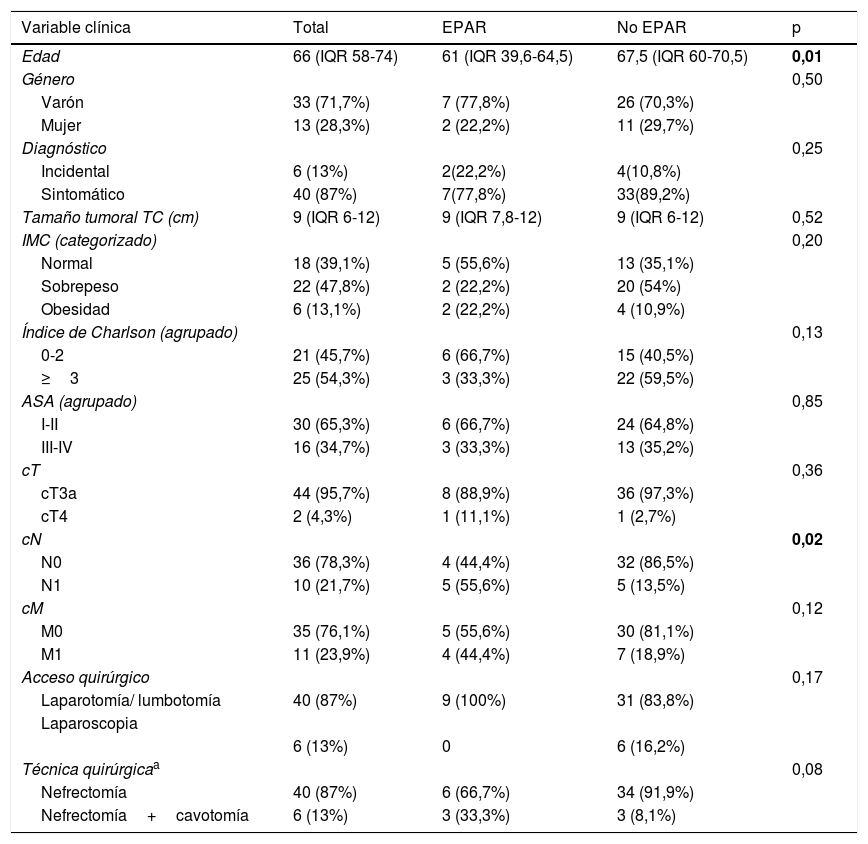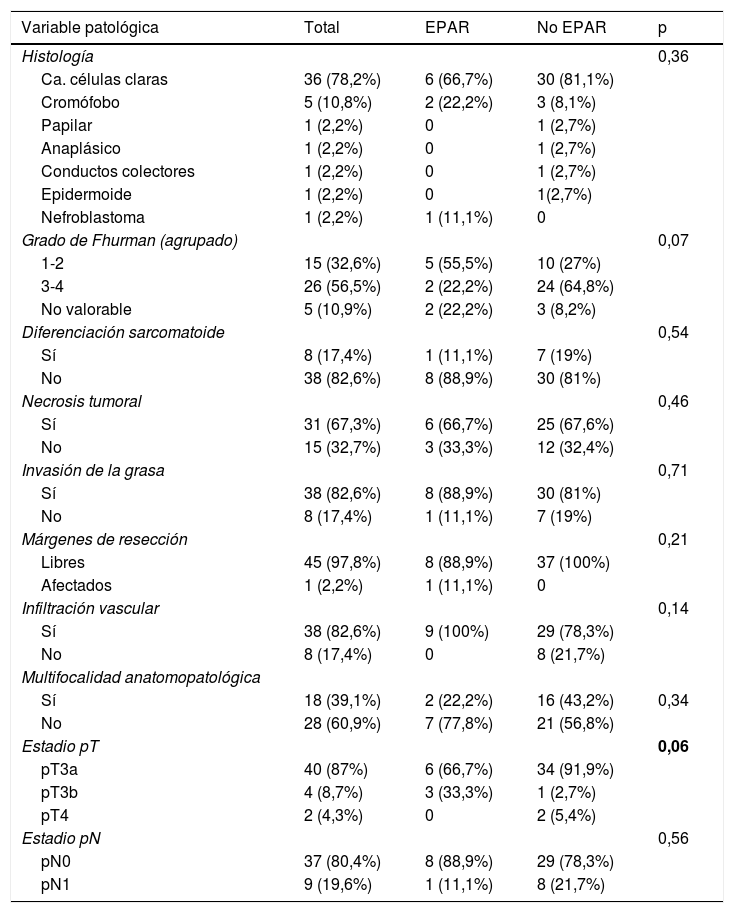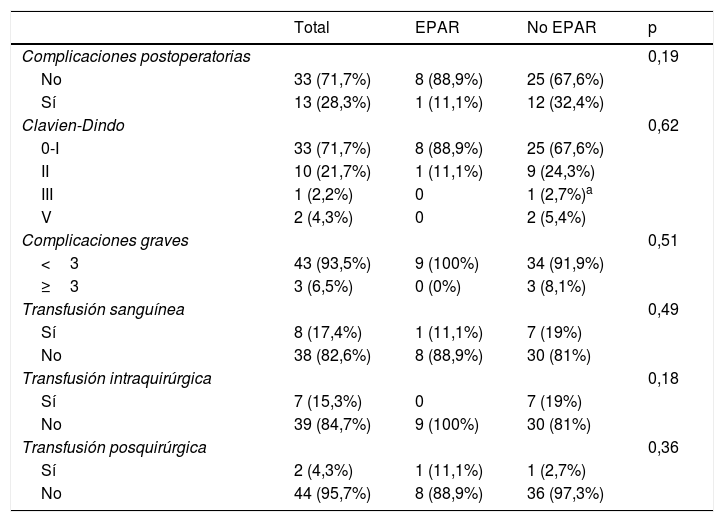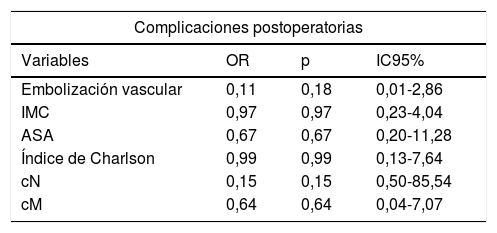La embolización prequirúrgica de la arteria renal (EPAR) puede emplearse en grandes masas renales antes de la nefrectomía para simplificar el procedimiento y disminuir el sangrado intraoperatorio. Nuestro objetivo es determinar el papel de la EPAR sobre el sangrado intraoperatorio y las complicaciones postoperatorias en los tumores renales izquierdos con trombo tumoral limitado a la vena renal izquierda (nivel-0).
Material y métodosAnálisis retrospectivo de 46 pacientes intervenidos de nefrectomía radical izquierda y trombectomía como tratamiento de un carcinoma de células renales asociado a trombo tumoral de nivel 0 durante el periodo 1990-2020. La EPAR se limitó a aquellos casos en los que el acceso quirúrgico a la arteria renal principal se encontraba a priori dificultado en el estudio de imagen prequirúrgico (n=9; 19,6%). El sangrado intraoperatorio se estimó en base a la tasa de transfusión perioperatoria, y las complicaciones postoperatorias se categorizaron según la clasificación de Clavien-Dindo. Para el contraste de variables se utilizó el test Chi-cuadrado. Se realizó un análisis multivariable para identificar los predictores de transfusión y complicaciones.
ResultadosNo existieron diferencias significativas en la tasa de complicaciones global (11,1 vs. 32,4%; p=0,19), complicaciones graves (0 vs. 8,1%; p=0,51), o tasa de transfusión (11,1 vs. 19%; p=0,49) entre ambos grupos (EPAR vs. no-EPAR). En el análisis multivariable la EPAR no se comportó como un predictor de complicaciones (OR: 0,11; IC95% 0,01-2,86; p=0,18) ni de transfusión (OR: 0.46; IC95% 0,02-7,38; p=0,58).
ConclusionesEn nuestro estudio sobre carcinomas de células renales izquierdos con trombo tumoral de nivel 0 y dificultad de acceso a la arteria renal principal, la EPAR no se asoció a un incremento del sangrado o complicaciones postoperatorias, ni se comportó como un predictor independiente de los mismos. Por tanto, podría emplearse como una maniobra prequirúrgica segura para facilitar el manejo vascular en casos seleccionados.
Preoperative renal artery embolization (PRAE) for large renal masses may be performed prior to nephrectomy in order to simplify the procedure and reduce intraoperative bleeding. The objective of this work is to determine the role of PRAE on intraoperative bleeding and postoperative complications in left renal tumors with tumor thrombus limited to the left renal vein (level 0).
Material and methodsRetrospective analysis to evaluate 46 patients who underwent left radical nephrectomy and thrombectomy for the treatment of renal cell carcinoma with level 0 tumor thrombus during the period 1990-2020. PRAE was limited to those cases in which surgical access to the main renal artery was presumed a priori difficult in the preoperative imaging study (n=9; 19.6%). Intraoperative bleeding was estimated based on the perioperative transfusion rate, and postoperative complications were categorized according to the Clavien-Dindo classification. The Chi-squared test was used for comparisons. A multivariate analysis was performed to identify predictors of transfusion and complications.
ResultsThere were no significant differences in the overall complication rate (11.1% vs. 32.4%, P=.19), major complication rate (0% vs.8.1%, P=.51), or transfusion rate (11.1% vs. 19%, P=.49) between both groups (PRAE vs. non-PRAE). In the multivariate analysis, PRAE did not behave as a predictor of complications (OR:0.11, 95%CI 0.01-2.86; P=.18) nor transfusion (OR:0.46, 95%CI 0.02-7.38;P=.58).
ConclusionsIn our study on left renal cell carcinomas with level 0 tumor thrombus and difficult access to the main renal artery, PRAE was not associated with increased bleeding or postoperative complications, and it did not behave as an independent predictor of these variables. Therefore, it could be used as a preoperative maneuver to facilitate vascular management in selected cases.














